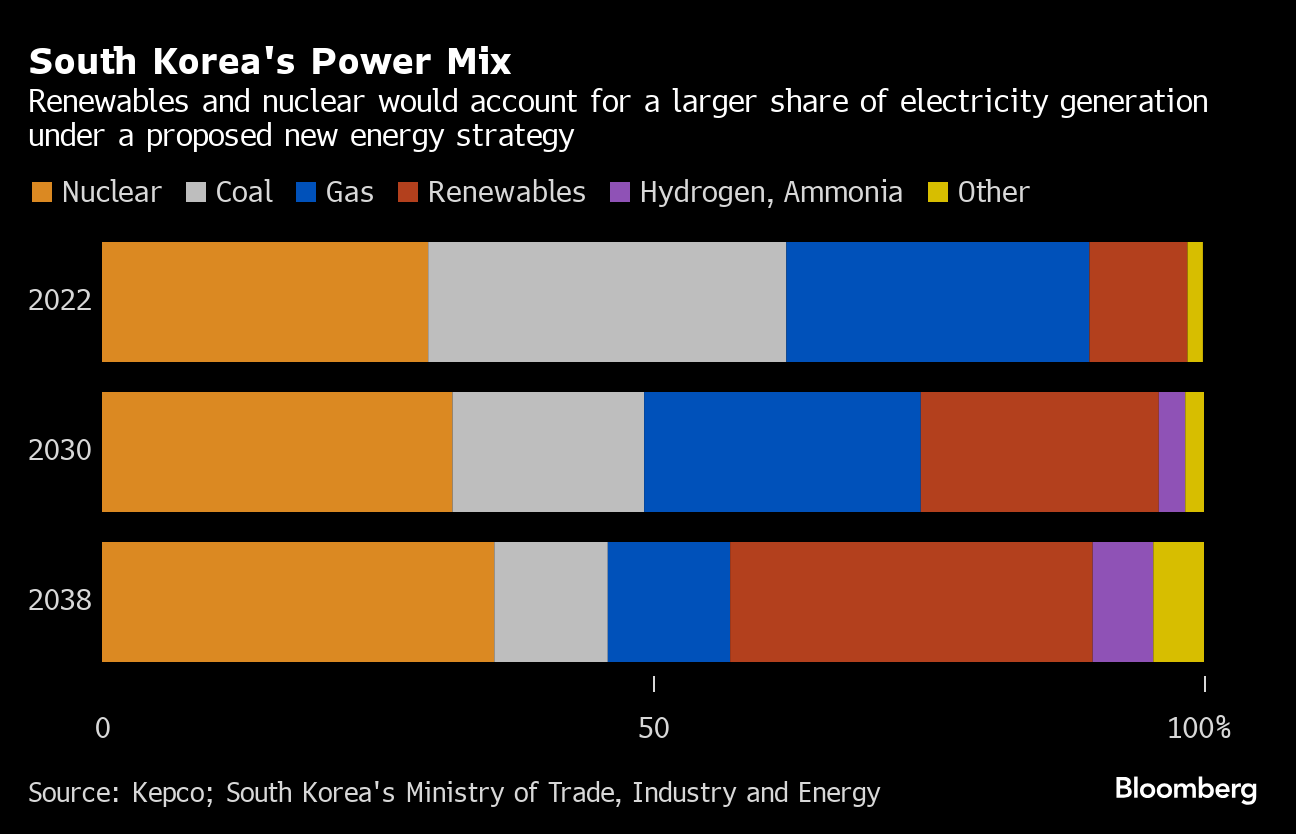South Korea to Embrace Nuclear and Hydrogen to Cut Emissions
(Bloomberg) -- South Korea will focus on nuclear power and hydrogen to reach net zero by the mid-century, according to the country’s vice energy minister, as it struggles to expand solar and wind.
“Every country faces different challenges and, for us, we don’t think relying solely on renewable energy will get us anywhere,” Vice Minister of Trade, Industry and Energy Choe Nam-ho said in an interview. Geographical challenges have made it difficult to deploy intermittent generation sources, such as wind and solar, across the country, he said.
Renewables make up less than 10% of the nation’s power mix. The aim is to double this by the end of the decade and triple it by 2038, but that will still be less than a third of total generation. To meet the gap, President Yoon Suk Yeol’s administration is targeting more nuclear reactors — currently supplying about 30% of the country’s electricity — and wants to retrofit power plants to blend, or co-fire, hydrogen with coal and gas.

Co-firing is a controversial technology, with critics arguing that it’s costly, inefficient and releases other greenhouse gases, and hydrogen still hasn’t been deployed at scale anywhere in the world. Lifting the role of nuclear and hydrogen could slow the build-out of solar and wind, which will become cheaper in the coming years, according to BloombergNEF.
South Korea has been a global laggard on targets to cut emissions, with its grid shackled by heavy dependence on fossil fuels. The Constitutional Court of Korea ruled last week that the absence of incremental climate goals from 2030 through 2050 doesn’t conform with the constitution.
The country needs to provide a stable supply of power to energy-intensive industries such as the semiconductor sector, and has to consider trade-offs to come up with the best plan, Choe said.
“Generating power from burning hydrogen offers flexibility and helps address the intermittency issues” with solar and wind, he said. “Embracing carbon-free sources — nuclear, hydrogen and other clean power technology — is becoming the realistic way of reaching net zero.”
©2024 Bloomberg L.P.





